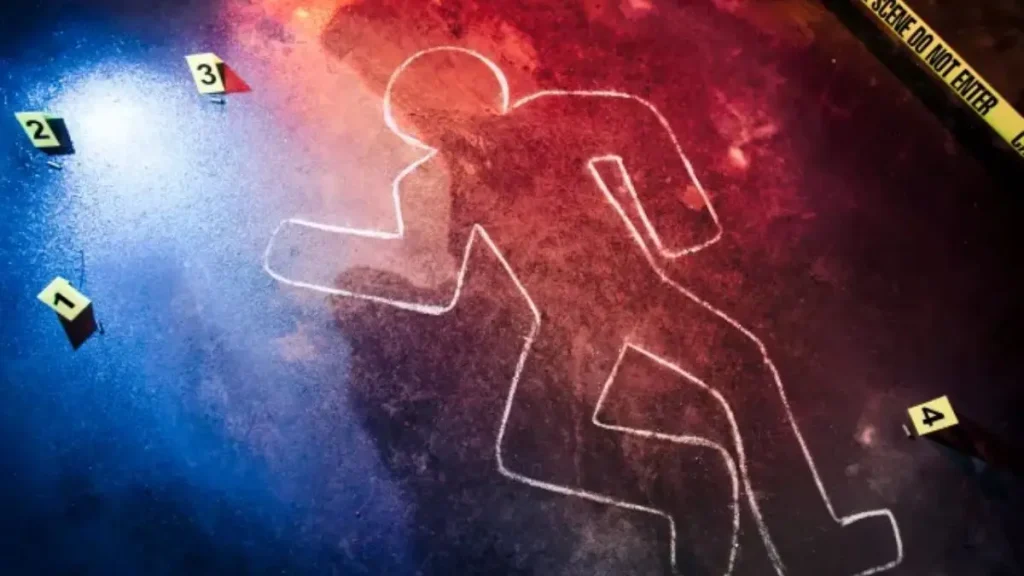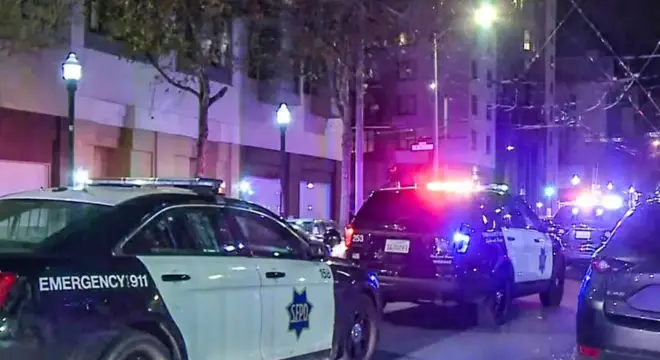Hazelwood Murder-Suicide Case Sparks Questions About Home Security and Mental Health
I saw the headline and froze. A couple found dead in their Hazelwood home—it’s the kind of story that forces you to stop scrolling and really think. This wasn’t some distant tragedy. It happened right here.
According to KSDK News, Hazelwood Police were called to a home on Teson Road around 5 p.m. on Sunday, May 12, after someone requested a welfare check. Officers entered the residence and discovered two people dead from gunshot wounds. As per initial reports, the man is believed to have shot the woman before taking his own life.
It was actually a concerned relative who first tried to contact the couple and, after getting no response, alerted the authorities. The police haven’t released the names yet, likely out of respect for the families or because the investigation is still in progress.
It’s not just a story—it’s someone’s worst day. A neighbor you saw at the mailbox. A couple who maybe smiled in passing. And now, two lives gone. Just like that.
We often ask: “Why would someone do this?” But maybe the better question is: “What were the signs—and did anyone notice?”
What do you think? Have you ever seen someone silently struggling and weren’t sure how to help? Let’s talk about it. Drop your thoughts or experiences below—someone reading might need to hear it.
Timeline of Events Leading to the Discovery
Sometimes, the silence says everything.
On Tuesday, May 14, 2024, a concerned family member reached out to the Hazelwood Police Department after being unable to get in touch with a couple living in the 7000 block of Teson Road. They hadn’t been answering calls or messages, and that silence stretched long enough to raise alarms.
According to official reports, officers were dispatched shortly after 5 p.m. When they arrived, the house was locked. There were no signs of forced entry or obvious disturbance from the outside. But when they went in—they found both individuals dead inside the home from gunshot wounds.
Police are not looking for any suspects. From what they found at the scene, it appears to be a murder-suicide. No break-in. No struggle. Just an unimaginable act—behind closed doors.
What’s unclear is when exactly the incident happened. The couple may have died a day or two before they were found. Which makes that phone call from the relative all the more important. Without it, this story might have taken even longer to come to light.
Community Reaction and Neighbor Statements
When something like this happens on your own street, it doesn’t feel like “news.” It feels like a punch to the gut.
Neighbors along Teson Road were stunned. Many had no idea anything was wrong. The couple kept to themselves, and there were no loud arguments or police visits—nothing to suggest something this tragic was coming.
One neighbor, speaking to St. Louis Post-Dispatch, said they were “shocked and heartbroken,” describing the area as quiet and friendly. Most people in the neighborhood have lived there for years. You see the same faces, wave at the same porches. No one expected anything like this.
“They seemed like normal people. We never heard anything loud or troubling.”
— Local resident via STLToday report
Another resident told reporters that the couple “mostly stayed indoors” and weren’t very social, but there was never any suspicion that something might be wrong behind closed doors. And that’s what hits hardest—how normal everything seemed… until it wasn’t.
The ripple effect of a tragedy like this doesn’t stop at the property line. It spreads—to friends, coworkers, relatives, neighbors, and even strangers who walk past the house and feel a shift in the air. That eerie quiet. That yellow tape. That awful finality.
Online, people from Hazelwood and across St. Louis began sharing their thoughts. On Reddit and Facebook, locals posted messages of disbelief and concern, asking whether there had been any earlier warning signs or prior incidents.
While the police haven’t confirmed any history of domestic issues, that absence of evidence doesn’t make the loss any easier to process.
Have you ever felt something was “off” but didn’t speak up? Or maybe you’re the one who bottles it up because you think no one will get it. Share your thoughts or experiences below—your voice might help someone else open up.
Investigative Insights and Police Statements

At this stage, Hazelwood Police have made it clear: they’re not searching for any suspects. From the evidence at the scene, it appears the case is a domestic murder-suicide — the man shot the woman, then turned the gun on himself.
According to statements released to multiple local outlets, there were no signs of forced entry, no third party involved, and no indication of a struggle. The weapon was recovered at the scene. The working theory is that this wasn’t a spontaneous act—it may have been premeditated.
But what’s still missing are the why and the warning signs. Police haven’t confirmed any prior domestic disturbance calls to that address. No restraining orders. No visible history of violence — at least, not on record.
“This appears to be an isolated incident involving two individuals in a domestic relationship,”
— Hazelwood Police Department statement, per local news reports
They’re also waiting on toxicology reports and phone records, which could shed light on mental state, conversations, or intentions leading up to the event. But right now, most answers are still locked in silence.
The St. Louis County Medical Examiner is handling the official cause of death and timeline, but as of now, names have not been publicly released — likely to give the families space to grieve.
A recent case in California highlights the growing concern over residential crime, where a homeowner was shot during a home invasion — read full details on the California home invasion incident.
Understanding Murder-Suicide — A Broader Perspective
Murder-suicide incidents, particularly within intimate relationships, are a tragic and complex phenomenon. According to the Violence Policy Center’s 2024 report, “When Men Murder Women,” in 2022, over 2,400 females were killed by males in single victim/single offender incidents. Of these, 87.5% of victims knew their offenders, and 66% were killed with firearms.
The American Psychological Association highlights that survivors of intimate partner violence are at a significantly higher risk of suicide attempts. This underscores the profound mental health implications associated with domestic abuse.
Furthermore, the American Foundation for Suicide Prevention notes that homicide-suicide events, often involving intimate partners, are among the most devastating forms of violence, leaving lasting impacts on families and communities.
These incidents are not isolated; they reflect broader societal issues, including access to firearms, mental health challenges, and the need for effective intervention strategies.
Resources for Mental Health and Domestic Violence Support
If you’re reading this and something about this story feels too close, don’t brush it off.
Maybe you’ve seen similar behavior in someone you love. Maybe you’re the one keeping things inside. Either way, you don’t have to wait for a tragedy to start looking for help. Support exists — and it’s not just for when things get “bad enough.” It’s for now.
National and Local Helplines:
- National Domestic Violence Hotline (U.S.)
- 1-800-799-SAFE (7233) — 24/7
- thehotline.org
You can call, chat, or text. Completely free and confidential.
- Missouri Coalition Against Domestic
- www.mocadsv.org
Offers a list of shelters and legal advocacy services across Missouri.
- Behavioral Health Response – St. Louis
- 314-469-6644 or 1-800-811-4760
A 24/7 mental health crisis line available to anyone in the St. Louis area.
- Suicide & Crisis Lifeline (USA)
- Dial 988
Whether you’re having thoughts of suicide or just need to talk — someone will listen.
What if you’re not sure it’s “serious enough”?
That’s the thing — it doesn’t have to “look” serious to feel scary.
Emotional manipulation, isolation, or walking on eggshells around someone you live with?
Those are signs. And you deserve to talk to someone about them.
What You Can Do Right Now?
- Text a friend and say, “Hey, I just read something that made me think. Can I talk to you about something?”
- Bookmark one of the links above — even if you think you’ll never need it.
- Share this article with someone who seems off lately. No pressure. Just awareness.
You don’t need to wait for the worst-case scenario. You just need a reason to reach out.
Let this be it.
Ethical Reporting and Media Responsibility

Stories like this walk a fine line.
There’s a natural urge to want to know everything: names, details, what went wrong. But when we report on murder-suicides, especially involving families or domestic partners, the priority shouldn’t be clicks — it should be care.
Responsible reporting means we share facts, not speculation. We avoid turning someone’s worst moment into a spectacle. It means we think twice before posting or resharing headlines that reduce people’s lives to a few shocking lines.
“Don’t just chase the headline. Chase the context. That’s where the truth — and the humanity — lives.”
— Journalistic Ethics Briefing, Society of Professional Journalists
In cases like Hazelwood, police have chosen not to release the names yet — and that’s a reminder. Families are grieving. Kids may be involved. Neighbors are still trying to process what just happened across the street.
And as readers, we play a role too. Ask yourself:
- Am I sharing this out of concern — or just passing along shock value?
- Am I helping the conversation move forward?
If we want fewer of these stories, we have to learn to tell them better. And with empathy.
Conclusion
In the days after something like this, there’s always a strange quiet.
Yellow tape comes down. News vans drive away. But for the people who lived nearby—or knew the couple—it doesn’t just go away. It lingers.
Hazelwood neighbors have already started talking about organizing a memorial or vigil, although nothing formal has been announced as of now. Local support groups are also stepping up to offer grief counseling and domestic violence education.
Keep an eye on community Facebook groups and local bulletin boards — that’s often where first updates about vigils, fundraisers, or mental health resources are posted.
Some residents are also pushing for more mental health outreach programs, especially those focused on relationship violence and silent struggles at home.
This could be a moment where a neighborhood stays silent. Or it could be one where people come together to say: This matters. And it can’t keep happening.
Disclaimer: This article is based on publicly available information and is intended for awareness only. Details may change as the investigation develops. We aim to report respectfully and provide support, not speculate.


